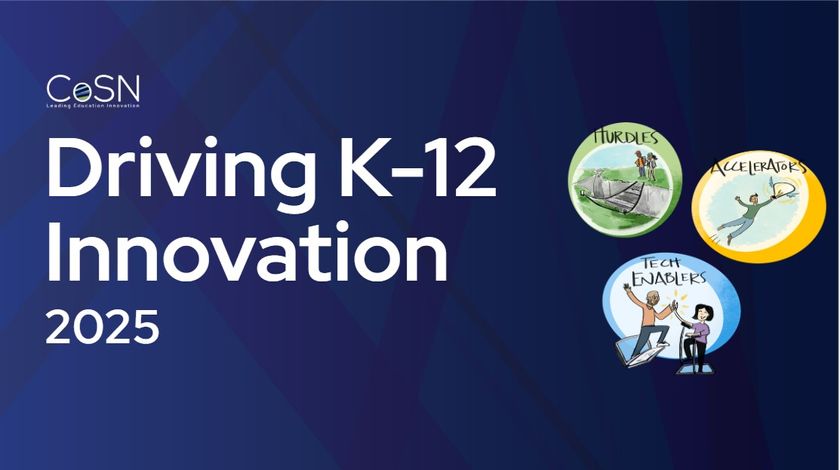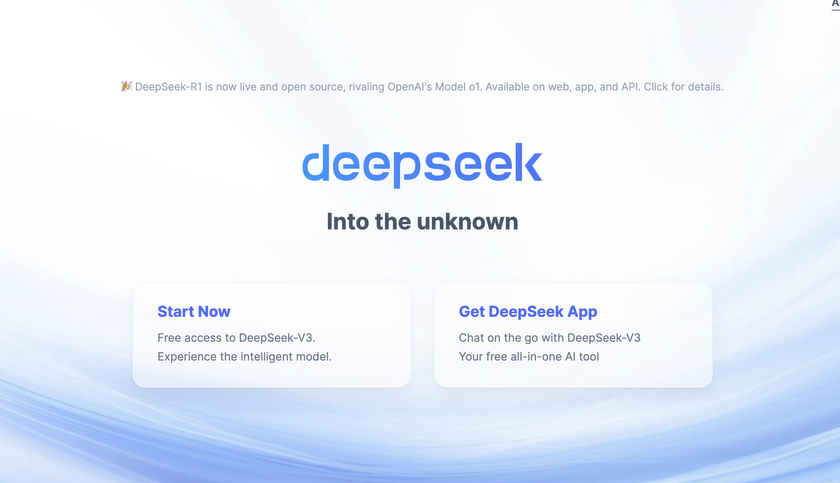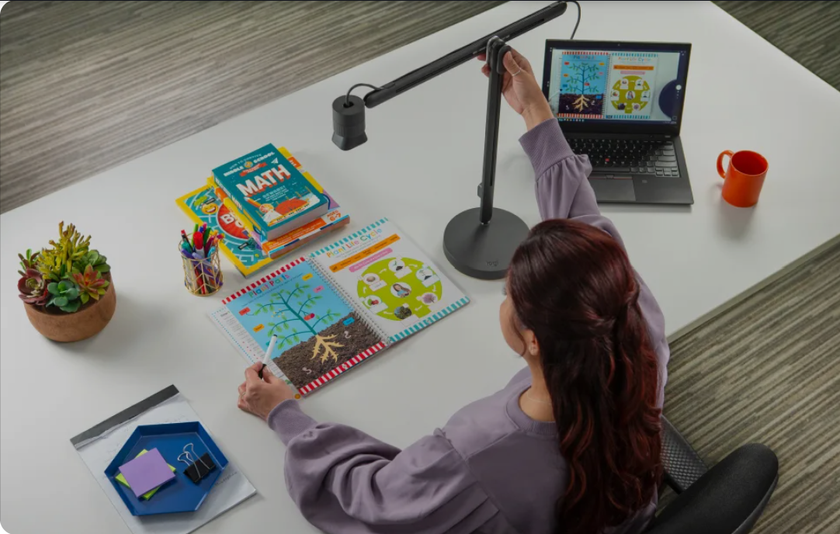Learning Communities And Educational Technology: Part I
At the forefront of many educational reform movements is the development of learning communities. Further, educational technology promises infinite access to information so students may acquire knowledge and demonstrate understanding of complex and challenging issues. Combining these two powerful forces in education may lead to development of collaborative learning environments that promote and sustain the integration of information technologies in order to enhance student and teacher learning experiences. The following paper is divided into two segments: Part I examines research on learning communities and Internet-based learning activities; Part II explores the implementation of a school district’s K-12 Technology Learning Community program.
The Learning Communities Model
Richard DuFour is a former District Superintendent and Robert Eaker is a former Dean of a college of education. These leaders in the advancement of school professional learning communities vehemently argued for changes in our methods of schooling to meet the different challenges and needs of our society and for our children. These include “goals that call for all students to master rigorous content, learn how to learn, pursue productive employment, and compete in a global economy” (DuFour and Eaker, p. 23). According to NYU professor Terry A. Astuto and her colleagues (1993, cited in Hord, 1997), a professional community of learners involves teachers and administrators in a school that continuously seek and share learning, then act on what they learn, with the goal of enhancing their effectiveness as professionals for student benefit. DuFour and Eaker (1998) analyzed the major theories on learning communities in order to synthesize a “clear vision of what a learning community looks like and how people operate within it” and therefore “offer insight into the steps that must be taken to transform a school into a learning community” (p. 25). As a result, DuFour and Eaker (1998) defined six characteristics of professional learning communities.
- Shared mission, vision, and values : DuFour and Eaker (1998) explained, “ What separates a learning community from an ordinary school is its collective commitment to guiding principles that articulate what the people in the school believe and what they seek to create” (p. 25).
- Collective inquiry : The collective search for continuous improvement. Ross, Smith, and Roberts (1994, cited in DuFour and Eaker, 1998) defined collective inquiry as a four step process of ‘the team learning wheel’ - public reflection; shared meaning; joint planning; coordinated action. DuFour and Eaker (1998) elaborated, “Ultimately, it is this ability to examine and modify beliefs that enables team members to view the world differently and make significant changes in the culture of the organization” (p. 26).
- Collaborative teams : Rather than focus on individual growth and development, professional learning communities rely on collective continuous improvement, learning from one another. Fullan (1993, cited in DuFour and Eaker, p. 27) exclaimed the importance of collaboration in Change Forces:The ability to collaborate — on both a large and small scale — is one of the core requisites of post modern society... (I)n short, without collaborative skills and relationships it is not possible to learn and to continue to learn as much as you need in order to be an agent for social improvement.
- Action orientation and experimentation : DuFour and Eaker (1998) explained,
They recognize that learning always occurs in a context of taking action, and they believe engagement and experience [and experiment] are the most effective teachers… willingness to experiment is accompanied by a tolerance for results that may be contrary to what was anticipated…learning organizations consider failed experiments…opportunities to learn and then begin again more intelligently (p. 27). - Continuous improvement : The professional learning community understands and respects continuous work towards their mission and vision (DuFour and Eaker, 1998).
- Results orientation : A professional learning community must assess their efforts on the basis of results rather than intentions (DuFour and Eaker, 1998). Peter Senge (1996, cited in DuFour and Eaker, 1998) noted that “‘the rationale for any strategy for building a learning organization revolves around the premise that such organizations will produce dramatically improved results’” (p. 29).
DuFour and Eaker’s six characteristics of professional learning organizations invoke ideals professed by other leaders in the education field:
- Former University of Illinois professor Susan Rosenholtz (1989, cited in Hord, 1997) examined teacher workplace values in the late 1980s. Her research revealed that teachers who felt supported in their professional growth were more committed and effective than those who did not, thus improving opportunities to meet student needs. The term ‘support’ included teacher networks, peer collaboration and cooperation, and enhanced professional responsibilities. These teachers were also more likely to explore new pedagogy and remain in the profession (Rosenholtz, 1989, cited in Hord, 1997).
- Harvard University professor Ronald Heifetz (1994) believed that “developing adaptive capacity” and the ability to “corral people into collaborative work” are essential elements in the long-term tasks of leadership. Leadership as it supports technology integration will be explored further in the next section of this literature review.
- Trinity University professor Thomas Sergiovanni (1999) expressed the need for building community in schools, whereby individuals are connected to a set of shared ideas and ideals.
- University of Toronto Professor Michael Fullan (2001) identified the goal of educational change to having all members of the learning organization see themselves as shareholders with a stake in the success of the system.
- Peter Senge’s 1990 book, The Fifth Discipline, signaled the paradigm shift in relationships within learning organizations. In accordance with DuFour, Eaker, Heifetz, and Sergiovanni, Senge (1990) examined organizations as interdependent systems (systems thinking). Senge (1990) recognized the importance of individual learning (personal mastery), collective ideals (shared vision), cooperative experiences (team learning), and the pitfalls of generalizations and assumptions (mental models).
Yet how are professional learning communities applicable to educational technology using the Internet?
Learning Communities and Internet-based Learning Activities
University of Maryland professor Kathleen P. Fulton and University of California, San Diego professor Margaret Riel analyzed the process of creating Internet-based professional development opportunities through learning communities. Fulton and Riel (1999) stated how educational reform’s emphasis on collaboration enabled the formation of learning communities as “appropriate and effective vehicles for new student learning.” According to the authors, knowledge construction is rarely conducted in isolation (Fulton and Riel, 1999). The advent of information technologies facilitates opportunities for community learning.
Tech & Learning Newsletter
Tools and ideas to transform education. Sign up below.
The Internet may foster collaborative learning environments for teachers where they can reflect on instruction and curriculum, share ideas in a distributed knowledge framework, and create a common understanding of teaching and learning (Fulton and Riel, 1999). Continuous professional development in such communities provides time for teachers to collaborate in a safe and risk-taking environment to improve student learning. Early examples of such learning communities in practice included Tapped In and the Maryland Electronic Learning Community (Fulton and Riel, 1999). Tapped In offers educators an online site to reflect on practice, experiment, share pedagogy, participate in online courses, and support each other in a Web-based network of continuous learning. MELC is an electronic learning community using Internet-based technologies to support and enhance middle school instruction and professional development. Key to the project is the development of an electronic lesson plan template. Since there is no centralized source of expertise, participants collaborate to experiment and learn together (Fulton and Riel, 1999). MELC formed a partnership with Johns Hopkins University Center for Technology in Education and Towson University expanding its offerings as part of the Maryland Technology Academy. In accordance with Fulton and Riel, Ted Kahn, Co-Founder, President and CEO of DesignWorlds for Learning, Inc., studied the creation of virtual learning communities as an aspect of education reform.
Kahn (1999) argued that technology will be an effective catalyst for systemic change if educators “support, enrich, and leverage the creative work and lifelong learning opportunities of all the people who, together, form a learning community – learners, providers, payers and policymakers.” The information age at the dawn of the 21 st century challenged the factory model of education and our understanding of how we learn (Kahn, 1999). Kahn (1999) noted former Labor Secretary Robert Reich’s theory that the main area of job growth is now ‘knowledge work,’ where “value is developed by all the different groups involved in a learning community through their creating, sharing, and applying their own new knowledge, not just in acquiring or absorbing knowledge created by others.” Kahn (1999) suggested that online virtual learning communities provide an environment for educators to connect with and learn from others collaboratively in constructing new knowledge. Similar to Maryland’s Electronic Learning Community, the state of Wisconsin initiated an online professional development program to enhance the technology integration in its schools.
The Wisconsin Educational Communications Board (WECB) was “to provide a statewide telecommunications system and assistance in the diffusion of advanced technologies in support of education” (WECB, 2003). The Board established a vision “ensuring the Wisconsin residents have equitable access to telecommunication services and advanced technologies in support of educational goals” (WECB, 2003). As a result, the Board created Facilitated Online Learning Communities “to provide continuous professional development, collaboration, and networking with Wisconsin educators” (WECB, 2003). Some programs include WECB Online (online conferencing for educators) and TeacherLine (web-based courses for teaching math and technology integration). Thus teachers form learning communities, sharing similar interests, ideas, and mutual goals. They learn from one another and grow as professionals through these interactions (Newell et al, 2003). Similar to MELC, professional development is continual and ongoing as participants learn from their peers with just-in-time feedback and support (Newell et al, 2003). Teacher-leaders are trained as facilitators of the online learning communities. Teachers therefore feel validation and support as they engage in innovative activities to enhance student learning (Newell et al, 2003). Southwest Educational Development conducted a study on the effectiveness of such online learning community programs.
Southwest Educational Development program associate Mary Burns (2002) led a two-year professional development project with 160 K-12 volunteer teachers from ‘at risk’ or ‘low performing schools’. The project, “Applying Technology to Restructuring and Learning” (ATRL), sought “to help teachers create learner-centered learning environments supported by technology” (Burns, p. 295). The teachers were a mix of veterans and novice professionals. Burns (2002) observed that many of the teachers practiced traditional lecture and ‘skill and drill’ pedagogical techniques. Burns (2002) noted that at the outset, many teachers did not recognize any connection between their own learning and student experiences.
Burns (2002) described her professional development structure: two years and seventy-two hours over six sessions; supplemental monthly follow-up visits; classroom location with one to four computers; collaborative groups involved in project-based activities. Burns (2002) explained, “The activities were relevant to teachers, built on their prior knowledge…and offered opportunities for social interaction, multidimensional solutions, and personal reflection” (p. 297). Teachers then performed final projects using all their new technical skills in front of whole groups with follow-up questioning. Therefore, the learning process for teachers modeled constructivist applications.
As a result of the two-year professional development project, a majority of classrooms became technology integrated and student-centered (Burns, 2002). Teachers became mentors and facilitators as students actively engaged in technology integrated learning activities. Burns (2002) observed, “The shrouds had been removed from the computers…as essential learning tools for research, problem solving, and creative academic expression” (p. 296). Burns (2002) noticed how the academic, physical, and emotional distance between student and teacher disappeared, as they became co-learners. Additionally, the project generated collaborative learning. The teachers seemed more reflective about their practice and pedagogy (Burns, 2002). One teacher remarked, “‘We had to learn how to learn again...and we loved it. We have become a community of learners, and we've passed this love of learning on to students. Now they have become a community of learners too’” (Burns, p. 297). Burns (2002) noted a 66% increase in collaborative curriculum development, a 62% increase in collegial discourse, and a 65% increase in sharing student work. The result of Burns’ study contradicted many traditional assumptions about professional development with technology.
First, teacher technology proficiency did not result in greater use of technology by students and increased learner-centered instruction. Burns (2002) explained, “the greater the teacher's computer skills, the 'lower' his or her use of learner-centered approaches; the weaker the technology skills, the higher the use of learner-centered approaches” (p. 299). Second, Burns (2002) found the best way to learn technology was to engage meaningfully with nurtured skills and learning concepts, rather than on specific content knowledge. This enabled teachers to become involved in interdisciplinary, collaborative assignments and teaming, modeling future activities for students. Third, Burns (2002) acknowledged teachers’ fear that teams of students with limited hardware would challenge classroom management. However, teachers reported that technology groupings foster improved student behavior and discipline. Students became more active learners as the teacher facilitated rather than directed instruction.
Burns concluded with several statements assessing the success of the ATRL model. Burns (2002) remarked, “Technology served as a vehicle for ‘learning about learning’” (p. 302). The professional development model focused less on how instructors teach and more on how teachers can learn (Burns, 2002). Burns (2002) summarized how the project encouraged “teachers to learn from one another and from their students...bridging the gap between teacher and learning, and by encouraging teachers to envision themselves as learners” (p. 302). Several technology learning communities initiatives favor teacher facilitators as the centerpiece of the learning organization.
For Overused and undersold: Computers in the classroom, Larry Cuban (2002) studied the five-year Teacher-Led Technology Challenge Project (TLTC) in Berkeley California. The federally-funded program placed two computers, a printer, and scanner in 175 classrooms in 15 schools. Additionally, each school was assigned an instructional technician. At the heart of the program was a volunteer Lead Teacher for each school. The “Lead Teacher” helped colleagues integrate technology into the curriculum. Professional development was available for these and other teachers. Furthermore, students could take home computers. As a result, 20-40% of teachers noted that TLTC helped to increase student-centered practices, such as cooperative learning and differentiated instruction. Also, a majority of students were reported to benefit from the technology skills, demonstrate greater interest in school, and improve cooperation with peers. Yet even with successful technology initiatives, Cuban found ways to detract from its promise. Cuban (2002) noted that decreases in funding, coupled with entrenched social, organizational, and context issues, will eventually impede TLTC’s progress. Margaret Riel and Henry J. Becker (2000) examined the TLTC survey data of the late 1990s to study this concept of teacher leadership.
The Beliefs, Practices, and Computer Use of Teacher Leaders study conducted by Riel and Becker (2000) grouped teachers into four categories based on reported levels of professional engagement by sharing knowledge with colleagues. Those who placed high value on professional collaboration and interaction were identified as Teacher Leaders. Down the spectrum were Teacher Professionals, Interactive Teachers, and then Private Practice Teachers, who were least engaged with colleagues and reported little or no dialogue with their peers beyond mandated activities. Teachers were also identified based on their active computer use for instruction. Riel and Becker (2000) found several results that supported the creation of professional learning communities, which in turn affects teacher use of computer technology, connecting with constructivist learning opportunities.
Riel and Becker (2000) found a “clear and consistent” pattern that “Teacher Leaders and Teacher Professionals share constructivist philosophy and practice” (p. 31). Therefore, “The more markers of collaborative, professional engagement, the more likely a teacher is to display and to act from a conception of knowledge that is consistent with constructivism” (p. 32). This supports the argument for the development of peer-led learning communities within an organization. Riel and Becker (2000) concluded that “Teacher Leaders were 10 times more likely to be highly active computer users when compared to Private Practice teachers…only 4% of the Private Practice Teachers fall in the category of Highly Active Computer Users” (pp. 32-33). Teacher Leaders incorporated information technology as a tool to help students research, understand, and explain their ideas (Riel and Becker, 2000). The relationship between constructivist pedagogy and computer use appeared reciprocal. Riel and Becker (2000) explained,
The most talented Leaders with a strong constructivist orientation could not possibly ignore one of the most powerful tools for constructivist learning, and so they would naturally invest time and energy in learning how to use them. The other reverses the causality relationship. Teacher Leaders who become involved in using computers become more constructivist as a result of seeing what their students are able to accomplish through mediated learning (p. 33).
Riel and Becker (2000) argued how the current structure of schools supports Private Practice teachers, and provides little incentive to teachers who respect professional growth. Riel and Becker (2000) exclaimed that their data indicated “that behind closed doors, everyday, children are being denied access to the quality of teaching that is the promise of free public education” (p. 33). The authors contended that classroom practice mirrors professional engagement (Riel and Becker, 2000). Teachers who participate in collaborative learning communities “have a voice in constructing meaningful understanding of their practice and…were found to create within their classrooms a similar environment for their students” (p. 34). Professional development opportunities led by “outside experts” perpetuate isolated ‘private’ teaching practices. Thus, teacher-facilitated learning communities support constructivist learning and technology integration. Riel and Becker (2000) concluded,
teachers who assume a professional orientation to teaching are far more likely to have made high investments in their own education, to have constructivist compatible philosophical beliefs about education to develop the instructional practices that are related to their beliefs and to integrate computers into their classrooms in ways that support meaningful thinking and the sharing of ideas with their peers—professional behavior! The social structure that teachers create for student learning in their classroom mirrors their own relationship to their colleagues in the larger educational community (p. 34).
A school district that has combined the research of teacher-facilitated learning communities with technology integration is Byram Hills Central Schools in Armonk, New York, as will be shown in Part II.
Email:Steven M. Garcia










